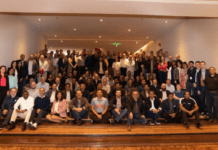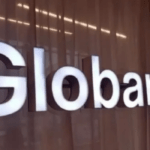Body doubling, in the context of productivity, refers to the practice of having someone else present while you work on a task or project. This concept originated in the field of psychology and the term was first coined by Patricia Vance in the 1980s. Vance, a cognitive-behavioural therapist, utilised the technique of body doubling to assist individuals with attention deficit hyperactivity disorder (ADHD) or executive function difficulties.
The idea behind body doubling is to have another physical presence nearby while one is engaging in a task that requires focus and concentration. This other person or ‘body double’ acts as a supportive presence, offering accountability and reducing distractions. This concept has since been adapted and widely used in various productivity and self-help strategies, particularly within the ADHD and neuro-divergent communities. However, in the corporate world, this is commonly referred to as ‘buddy concept’, where any new employees are accompanied by buddies from the same organisation, who help them get acquainted in the new environment.
What does a buddy do?
A buddy helps the employees to do the following:
Transition from campus to corporate: For freshers, the foremost advantage of having a buddy or body double at the workplace is that it ensures their smooth transitioning from the campus world to the corporate world. As Rajeev Singh, CHRO, Solara Pharma, puts it, “If we consider the transition from college to the corporate world or when individuals at mid-level positions join a company, buddies can be really helpful. When the new joinees (beginners and mid-levels) are still in the process of learning and adapting to the corporate environment, buddies can ensure that their transition happens smoothly and easily.
Enhance role effectiveness: Buddies are are already familiar with the role, the organisation and its culture. Therefore, they can provide significant assistance, particularly to new entrants or those new to a specific role. “A buddy’s knowledge of the organisational structure, processes, systems and culture becomes a valuable asset for the newcomers, enabling them to quickly acclimate and understand their role more effectively,” points out Ravi Kumar, CPO, Page Industries.
“The operations of organisations are governed by their established policies, systems and a distinct culture. These standards serve as guidelines for employees to ensure consistency and adherence to organisational protocols. Having a buddy at the workplace brings this sense of belonging.”
Tanaya Mishra, VP and head of HR, Endo International
Learn and develop skills: “During the initial stages of joining a company, everyone goes through a learning phase specific to that organisation. This learning process often follows a pattern of ‘I do, you observe; then I do, you observe; and then again I do.” This stage is crucial, especially when it comes to change management or taking on new assignments. This is where the concept of body doubling or having a buddy becomes essential,” opines Tanaya Mishra, VP and head of HR, Endo International.
Kumar also agrees and shares, “This knowledge becomes a substantial advantage as it facilitates a steep learning curve for the person being buddied. They can quickly gain insights and knowledge from their buddy, accelerating their learning and adaptation process within the organisation.”
Increase focus: Body doubling provides an external anchor that helps individuals stay focused on their work. The presence of another person can create a structured environment, making it easier to resist the temptation of distractions or procrastination. This can be especially helpful in open-office settings or remote-work situations, where there are numerous potential interruptions.
Experience a sense of belonging: Each organisation possesses its own unique culture and set of compliance requirements that must be adhered to. New employees need to understand this culture to feel they belong there. This is where this concept plays an important role. “The operations of organisations are governed by their established policies, systems and a distinct culture. These standards serve as guidelines for employees to ensure consistency and adherence to organisational protocols. Having a buddy at the workplace brings this sense of belonging,” asserts Mishra.
Singh also opines, “With the guidance of buddies who are already familiar with the processes in an organisation, the assimilation of new employees into the same culture becomes easy.”
“While technology can assist with certain repetitive tasks and facilitate learning to some extent, it cannot fully replace the cultural knowledge and insights that a buddy imparts. Technology has its advantages in specific areas, but when it comes to understanding the organisation’s culture, behaviours and the keys to success within it, human interaction is still essential.”
Ravi Kumar, CPO, Page Industries
Whether it’s knowledge transfer or other situations where expertise is lacking, having a body double significantly enhances productivity, efficiency and accuracy. It not only boosts productivity but also contributes to overall skill development and improvement. However, with the technology evolving at such a fast pace, is the concept as significant today as it was in the past?
There is a certain limit to what technology can achieve in terms of understanding and navigating complex organisational dynamics. As Kumar believes, “While technology can assist with certain repetitive tasks and facilitate learning to some extent, it cannot fully replace the cultural knowledge and insights that a buddy imparts. Technology has its advantages in specific areas, but when it comes to understanding the organisation’s culture, behaviours and the keys to success within it, human interaction is still essential.”
While advancements in technology, such as AI and generational advancements, have their benefits, they are more suited for repetitive tasks rather than fostering a deep understanding of the organisation’s culture and behavioural nuances.
Having said that the concept still has some limitations.
“Having a buddy at the workplace is a significant concept starting from beginner to mid-level roles, but, “beyond that, whether its technical experts or senior executives, a majority of the expertise and experience comes from working with people within that specific environment to gain a comprehensive understanding of managing various dimensions within the workplace. Therefore, the buddy system works effectively up to the second level.”
Rajeev Singh, CHRO, Solara Pharma
Drawbacks of the buddy system
Drives up payroll cost: Once an individual has mastered a certain level of proficiency, there is a point where further learning becomes limited. Hence, having an additional resource to do similar jobs becomes unnecessary and increases the payroll cost of the company. This, in economic terms, is also known as ‘disguised employment.’
Citing an interesting example, Mishra explains, “While boarding an aircraft, there are multiple personnel involved at various checkpoints. While one checks the ticket at the entrance, another one checks it at the ticket counter. There is someone at the baggage check, during the bus boarding, and finally, at the time of boarding the aircraft. In essence, six different individuals are employed for tasks that can potentially be automated or completed with the intervention of just two humans and one machine. This exemplifies disguised employment, where resources are allocated without achieving substantial results, consuming valuable time and driving up payroll costs within the company.”
Limited to mid-levels: “Having a buddy at the workplace is a significant concept starting from beginner to mid-level roles, but, “beyond that, whether its technical experts or senior executives, a majority of the expertise and experience comes from working with people within that specific environment to gain a comprehensive understanding of managing various dimensions within the workplace. Therefore, the buddy system works effectively up to the second level,” opines Singh.
Kumar agrees and believes that implementing the buddy concept or body doubling gets complex at senior levels for various reasons. He goes on to explain, “First, leaders at a senior level are typically hired for their domain expertise, experience and knowledge of implementation processes.
As a result, they may not necessarily require a body double as they already possess the necessary skills and knowledge. Additionally, having a body double requires the investment of time and resources from another individual within the company to support the new leader. At a senior level, finding a resource at a comparable level that can effectively fulfil the role of a body double becomes more difficult.”
Additionally, it can also be challenging for new leaders to accept that there are individuals within the organisation who can temporarily take over their responsibilities. This may lead to feelings of insecurity or reluctance to delegate authority. “Therefore, implementing the concept of a body double in organisations requires a high level of maturity, a thorough understanding of the concept, and effective collaboration between all parties involved,” points out Kumar.
Both the leaders believe the implementation is difficult at senior levels, as they don’t require a buddy or body double to understand their responsibilities towards the organisation. However, Mishra opines, “Whether it’s a new employee joining, or whether an assignment changes when someone is promoted to a senior leadership, or whether there is knowledge transfer, any situation that involves differences or where errors are not permissible requires careful attention. Every company has its own unique culture and processes. Therefore, there’s no better way to get acquainted with it than with the help of a buddy.”
With employees having digital buddies all the time with them, the definition of buddy concept/body double has evolved now. As Singh puts it, “We have now evolved beyond the buddy system and introduced mentoring, which is not a new technique. Mentoring, coaching and similar practices serve the same purpose as the buddy system but offer more advanced support. Not only do they provide answers to immediate concerns, but they also focus on helping individuals shape their future and develop under the guidance of a mentor or supervisor.”
As individuals progress within the organisation and advance in their careers or hierarchies, transitioning to mentoring or coaching proves to be a valuable step for personal and professional growth. “Beyond that, it requires innovation and transitioning to a more advanced version such as coaching, executive coaching, wellness coaching, or life coaching. These advanced forms of support are necessary for individuals at all levels within an organisation,” concludes Kumar.
Value our content... contribute towards our growth. Even a small contribution a month would be of great help for us.
Since eight years, we have been serving the industry through daily news and stories. Our content is free for all and we plan to keep it that way.
Support HRKatha. Pay Here (All it takes is a minute)




































